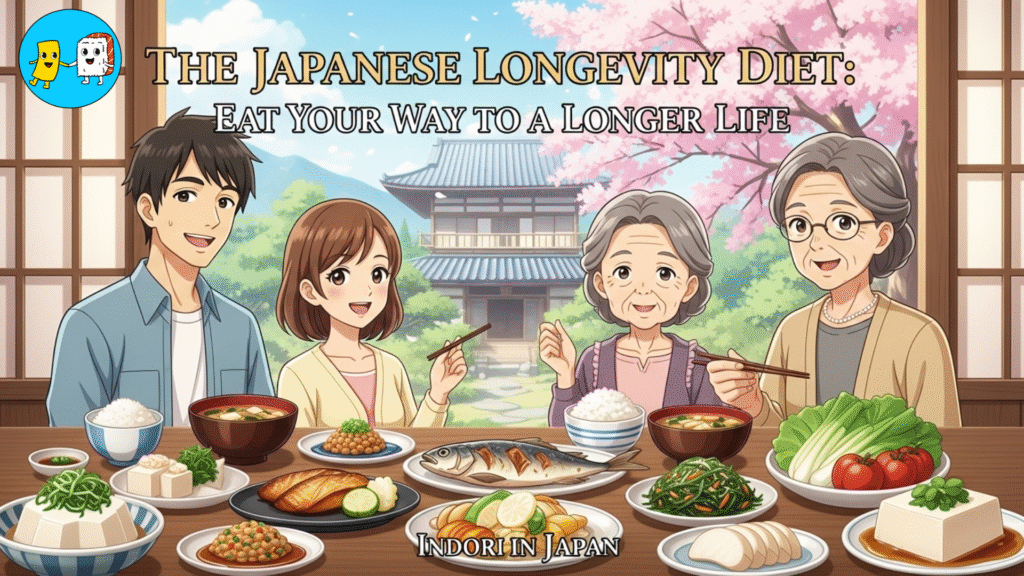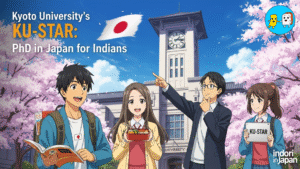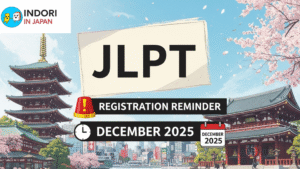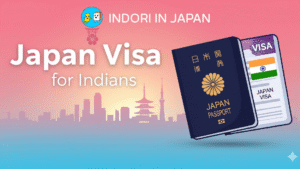Japan's Fountain of Youth: 7 Secrets to the Japanese Longevity (And How You Can Too!)
皆さん、こんにちは!(Hello everyone!)
When I first moved to Tokyo, I was amazed by the energy of the elderly. Back home in Indore, you expect to see grandparents resting or taking slow walks. Here, I’d see 80-year-olds gardening with incredible vigour, cycling through busy streets, and leading community classes with the energy of someone half their age. It wasn’t the exception; it was the norm. It made me ask the question that fascinates so many of us: what is their secret?
It’s no exaggeration. Japan consistently tops the global longevity charts, with a life expectancy of 84.5 years as of 2021. The country has a staggering number of centenarians (people over 100)—nearly 100,000 of them, with 88% being women. So, why do the Japanese live so long? Is it just good genes, or is it something we can all learn from?
After years of living here, observing the culture, and diving into the research, I can tell you it’s not one single thing. It’s a powerful ecosystem where diet, daily movement, purpose, and community all work in harmony. In this post, I’m going to break down the 7 core secrets I’ve observed and researched. This isn’t just about Japan; it’s a blueprint for a longer, healthier, and happier life for all of us.
Secret #1: The 80% Rule – How the Japanese Eat for Life
In Japan, how you eat is just as important as what you eat to get Japanese Longevity. This isn’t about strict, punishing diets; it’s a culture of mindful moderation that starts on the plate.
The Philosophy of Washoku
The foundation of Japanese eating is Washoku, or traditional Japanese food. It’s so integral to the culture that it’s recognised as a UNESCO Intangible Cultural Heritage. A typical Japanese meal is a beautiful, balanced rainbow of colours. It’s rich in vegetables, rice, fish, and soy products like tofu and miso, while being naturally low in red meat and saturated fats. This dietary pattern, high in omega-3 fatty acids from fish and low in harmful fats, is directly linked to lower rates of heart disease, stroke, and certain cancers.
Deep Dive: Hara Hachi Bu
Perhaps the most powerful principle comes from Okinawa, the southern islands famous for their longevity. It’s a 2,500-year-old Confucian mantra called Hara Hachi Bu, which means “eat until you are 80 per cent full”.
The science is simple but profound. It takes about 20 minutes for your stomach to send a signal to your brain that it’s full. By stopping when you feel about 80% full, you give your brain time to catch up, preventing overeating and the metabolic stress that comes with it. This habit is reinforced by the way food is served: on multiple small plates and in small bowls. It’s a form of built-in portion control that makes it almost impossible to over-serve yourself.
Spotlight on Superfoods
The Japanese diet is also packed with some incredible foods:
- Miso Soup: This isn’t just a starter; it’s a daily dose of health. Made from fermented soybeans, miso is a probiotic powerhouse. Research suggests it strengthens the immune system, has anti-inflammatory properties, and can even help lower nighttime blood pressure, interestingly, without the negative effects you’d expect from its salt content.
- Matcha & Green Tea: Tea culture is huge in Japan, and for good reason. Japanese green tea, especially matcha, is loaded with antioxidants that protect your cells from damage. Studies have linked its regular consumption to a lower risk of cardiovascular disease.
- Fresh & Seasonal: Because Japan is a series of islands, there’s a deep cultural appreciation for fresh, seasonal food. Produce travels short distances from farm to table, which means it’s packed with the maximum amount of nutrients.
The true power of the Japanese diet isn’t just in one of these “superfoods.” It’s the combined effect of eating these nutrient-dense ingredients while practising the cultural habit of mindful moderation. Eating healthy food provides your body with the right tools, but practising Hara Hachi Bu ensures you don’t overload the system, allowing those tools to work their magic.
Secret #2: Movement as a Way of Life, Not a Chore
For many of us, fitness is something we schedule—an hour at the gym, a 30-minute run. In Japan, especially for the older generation, fitness isn’t an event; it’s woven into the fabric of the entire day.
The Active Commute
While some studies suggest that Japanese people don’t necessarily “exercise” more in a formal gym setting, their daily life is filled with constant, low-intensity movement. Public transport is the norm here. That means walking to the station, standing on the train, and walking to the office. This built-in activity is a world away from the sedentary, car-dependent lifestyles common elsewhere.
Japan's National Wake-Up Call: Radio Taiso
Every morning at 6:30 AM, a gentle piano melody plays on Japan’s national radio station. This is the signal for Radio Taiso (Radio Callisthenics), a simple, three-minute exercise routine that has been a national tradition since 1928.
Millions of people—from schoolchildren to office workers to seniors gathered in parks to participate. The routine is designed to gently awaken the body, improve flexibility, boost circulation, and move every major muscle group. But its benefit is twofold. It’s not just physical; it’s a powerful communal ritual. It brings people together, fostering social connection and fighting the loneliness that can come with old age. Research has shown that for frail older adults, Radio Taiso improves agility, balance, and endurance, which are crucial for preventing falls.
You can even join in from home! Here’s a great video from the japansociety.org.uk showing the full routine.
Everyday Mobility
Other subtle habits add up. Gardening is an extremely common hobby among Japanese centenarians. Furthermore, many traditional homes and restaurants have tatami mat floors, which means people sit on cushions on the floor. Getting up and down from the floor multiple times a day is a natural form of strength training that builds lower-body and core strength, improving balance and protecting against dangerous falls in old age.
This reveals a crucial difference in philosophy. Many societies focus on “exercise,” a specific, often intense, block of time. Japan’s success comes from prioritising “movement,” a continuous state of low-intensity activity throughout the day. This approach is more sustainable and arguably more effective at preventing the health risks of a sedentary life.
Secret #3: Find Your Ikigai – The Ultimate Reason to Wake Up
Have you ever had a hobby that made you lose track of time? Or a sense of purpose that made you jump out of bed in the morning? The Japanese have a word for this: Ikigai (生き甲斐).
It’s often translated as “a reason for being.” It’s that sweet spot where what you love, what you’re good at, what the world needs, and what you can be paid for all intersect. But for many elderly Japanese, it’s simpler: it’s the purpose that gives life meaning.
Crucially, ikigai is not just about your job. After retirement, it might be mastering the art of bonsai, volunteering in the community, teaching a craft to grandchildren, or tending to a garden. In the Blue Zone of Okinawa, older residents can easily tell you their ikigai. This gives them clear roles and a feeling of being needed, even well into their 100s. This strong sense of purpose is linked to incredible psychological resilience, reduced stress, and a positive attitude toward ageing.
In many modern cultures, our identity and purpose are so tightly wound up in our careers that retirement can trigger a crisis. The concept of ikigai provides a cultural framework that encourages a lifelong search for meaning, creating a powerful psychological buffer that keeps the mind active, engaged, and forward-looking.
Secret #4: The Power of the Pack – The Okinawan Moai
Okinawa is one of the world’s original “Blue Zones”—regions where people live exceptionally long and healthy lives. While their diet is a key factor, another powerful secret is a social structure called a Moai.
A Moai (もあい) is a lifelong social support group, and the term means “meeting for a common purpose”. Traditionally, small groups of about five children were put together and made a commitment to support each other for life. These groups meet regularly—sometimes daily—to chat, share meals, and provide emotional, social, and even financial support in times of need. Some of these moai have lasted for over 90 years.
The health connection is undeniable. Loneliness is a modern epidemic, and studies have shown its negative health impact can be equivalent to smoking 15 cigarettes a day. A moai is a powerful, built-in antidote to social isolation. It provides a “safety net” that reduces stress and ensures its members always feel a sense of belonging. As one 77-year-old moai member, Klazuko Manna, explained, “If you get sick or a spouse dies or if you run out of money, we know someone will step in and help”.
Okinawa Japan has incredible stories about Okinawan traditions that are worth a read.
In a way, the moai are a form of cultural technology. In modern societies where communities can be transient and friendships can drift, the moai proactively engineers the deep, lifelong social bonds that are essential for our well-being. It transforms social health from a matter of luck into a structured, lifelong commitment.
Secret #5: Prevention is the Best Medicine – The Healthcare Mindset
Japan’s longevity is also supported by a world-class healthcare system and, more importantly, a cultural mindset that prioritises prevention over cure.
Since 1961, Japan has had a universal healthcare insurance system, which ensures everyone has equal access to medical care. This system was built on a foundation of strong public health laws enacted after World War II, which dramatically increased life expectancy by controlling infectious diseases.
But the system is only half the story. The culture is incredibly proactive. Regular health check-ups are the norm, provided at school, at work, and in the community. The average Japanese person visits a doctor more than a dozen times a year—often for preventive screenings—which is four times more than the average American. This approach, combined with successful government health campaigns to reduce salt intake and manage hypertension, means that potential problems are caught early, when they are most treatable.
This creates a virtuous cycle: an accessible system encourages a proactive health culture, and that culture makes public health initiatives far more effective.
Secret #6: A Culture of Cleanliness and Calm
This secret is more subtle, but it is everywhere you look in Japan. It’s about the physical and mental environment. Japan is famous for its public cleanliness, which isn’t just for aesthetics. It’s a deeply ingrained cultural value with roots in public health history, particularly in controlling the spread of disease. This “culture of hygiene” contributes to a healthier living environment with good sanitation and lower pollution in many areas.
This physical order is often mirrored by a cultural emphasis on mental calm and mindfulness. Concepts like shinrin-yoku (forest bathing) and the serene beauty of Japanese gardens reflect a deep connection with nature, which is a proven way to reduce stress and improve psychological well-being.
Secret #7: The Nuance – It's Not All Perfect
To give you a real, honest picture, it’s important to say that Japan is not a perfect longevity utopia. This is a real country with real challenges, and acknowledging them helps us understand what’s truly at stake.
The intense Japanese work culture has a dark side, encapsulated by the word Karoshi (過労死), which means “death by overwork”. The extreme stress and long hours in some industries are a serious threat to health. Furthermore, the traditional lifestyle is under pressure. The Westernisation of the diet is a growing problem, with consumption of fried foods, refined sugars, and processed items on the rise. This has led to increasing rates of obesity, even in Okinawa, which now has one of the highest BMIs in Japan. Some researchers have even begun to question the “Blue Zone” data, pointing to the erosion of these traditional habits.
This tells us something vital: Japan’s incredible longevity is not an unshakeable genetic gift. It is a fragile cultural heritage. The fact that modern challenges are starting to chip away at it proves that the health benefits are a direct result of the specific lifestyle choices and social structures that are now at risk. It adds a sense of urgency to learn from these secrets before they fade away.
Bringing Japan's Secrets to Your Life: An Action Plan
Okay, Akash, this is all fascinating, but what can I actually do? Great question! You don’t have to move to Okinawa to start living a longer, healthier life. Here are simple first steps inspired by these 7 secrets.
| The Japanese Secret | Your First Step Today |
|---|---|
| Hara Hachi Bu (The 80% Rule) | At your next meal, consciously put your fork down for 2 minutes midway through. Ask yourself, "Am I still hungry, or just eating out of habit?" |
| A Nutrient-Dense Diet | Add one more colour of vegetable to your dinner plate. Or, try making a simple miso soup this week—it's easier than you think! |
| Integrated Movement | Get off the bus/metro one stop early and walk the rest of the way. Or, take 3 minutes to do some simple stretches when you wake up, just like Radio Taiso. |
| Ikigai (Purpose) | Spend 10 minutes writing down one activity that makes you lose track of time. It could be gardening, painting, coding, or playing with your kids. Schedule it for this week. |
| Moai (Social Connection) | Don't wait for others to reach out. Send a message to a small group of 2-3 close friends and propose a regular weekly or monthly call/meetup—your own mini-moai. |
| Preventive Health | When was your last full-body check-up? If it's been over a year, book one today. Think of it as maintenance for your most important asset: you. |
| Mindful Environment | Take 5 minutes to declutter one small area of your desk or room. A clean space can lead to a calmer mind. |
Conclusion: Your Journey to a Longer Life Starts Now
The secret to Japanese longevity isn’t a magic pill or a single superfood. It’s about creating a holistic ecosystem where small, sustainable habits in diet, movement, purpose, and community all work together to support a long and, more importantly, a healthy and happy life.
The journey of a thousand miles begins with a single step. Pick just one thing from that table today. Your future self will thank you for it.
What do you think is the most powerful secret? Share your thoughts in the comments below! And if you’re serious about making your Japan dream a reality, my book, ‘Japan is the place to be’, is your ultimate guide to the culture, career opportunities, and hacks for living here. Check it out!
Ganbatte! (Do your Best!)
✍️ Bonus: Need Help Starting?
✅ Job hunting tips and real listings for foreigners in Japan
✅ Visa guidance made simple—no confusing search
✅ Resume & cover letter templates (Japanese & English formats)
✅ Life in Japan explained — from rent to ramen
✅ Travel guides & city recommendations for every kind of explorer
✅ Work culture insights to help you adjust and thrive





